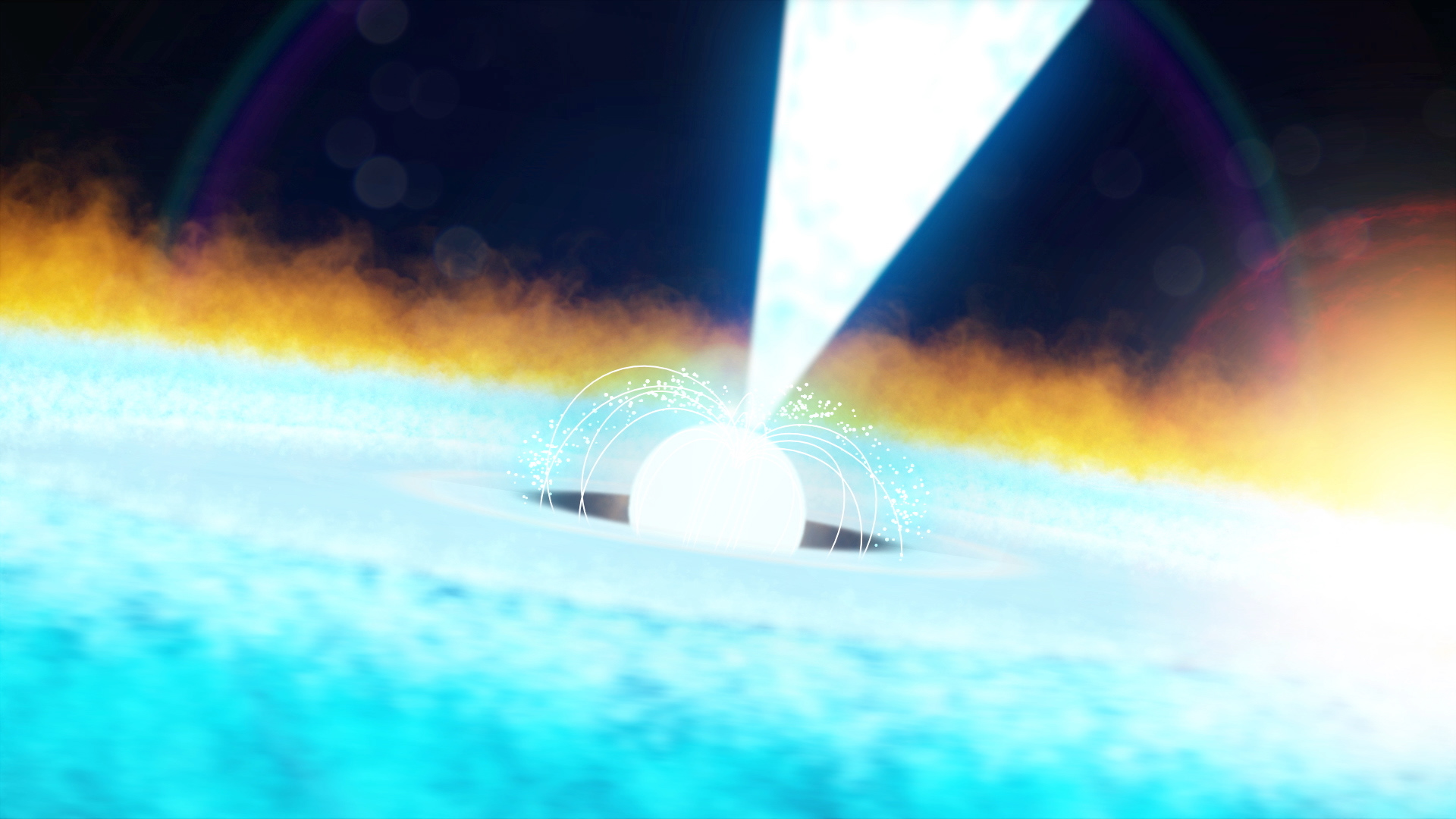NICER Telescope Spots Brightest X-Ray Burst Ever Observed
The burst released as much energy in 20 seconds as our sun does in about 10 days.
A telescope mounted on the International Space Station has detected a record-setting X-ray burst coming from a flash on the surface of the remains of an exploded star.
On Aug. 20 at about 10:04 p.m. EDT (0204 GMT on Aug. 21), NASA's Neutron star Interior Composition Explorer (NICER) telescope, which is on the space station, detected a sudden and extreme surge of X-rays. The brightest X-ray burst ever observed by NICER, it released as much energy in 20 seconds as our sun does in about 10 days, according to a statement from NASA.
The burst came from the object SAX J1808.4-3658, or J1808, a pulsar (a type of neutron star, or the remnants of a star that exploded as a supernova far in the past). The extra-bright burst was created by a thermonuclear flash on the surface of this pulsar, according to the statement.
Related: This Newfound X-Ray Pulsar Is Orbiting Its Partner at Record Speed

"This burst was outstanding," lead researcher Peter Bult, an astrophysicist at NASA's Goddard Space Flight Center in Maryland, said in the statement. "We see a two-step change in brightness, which we think is caused by the ejection of separate layers from the pulsar surface, and other features that will help us decode the physics of these powerful events."
This ultrabright, record-setting event is classified as a Type I X-ray burst, which is the most common type; it's identified by a brightness that often rises rapidly, and then slowly declines.
With this NICER observation, scientists will be able to improve their understanding of such extreme eruptions and learn more about what causes them on such objects as the J1808 pulsar.
Get the Space.com Newsletter
Breaking space news, the latest updates on rocket launches, skywatching events and more!
Creating a thermonuclear eruption
Pulsars often spin rapidly and emit X-rays from hotspots at their poles. J1808, which is about 11,000 light-years from Earth in the constellation Sagittarius, spins about 401 times every second.
The eruption on this pulsar's surface traces back to the binary system it's in, which includes a brown dwarf (an object too large to be a planet and too small to be a star). Hydrogen gas flows from this object to J1808, forming an accretion disk around it. After a period of time, this gas becomes so dense that some of it will lose its electrons (or ionize), which makes it more difficult for this gas, and therefore light, to move around the pulsar in this disk.
Trapped in this slow movement, that energy starts to build, heat up, ionize and create even more of this "trapped energy," which makes it even harder for gas to move in the disk. Eventually, the gas in the disk stars to spiral inward until it finally falls onto the pulsar. The hydrogen in the gas falls on the surface, adding to a "sea" of such material. At the bottom of this sea, extreme temperatures and pressures force the hydrogen nuclei to fuse and form helium nuclei — a process known as nuclear fusion.
"The helium settles out and builds up a layer of its own. Once the helium layer is a few meters deep, the conditions allow helium nuclei to fuse into carbon. Then the helium erupts explosively and unleashes a thermonuclear fireball across the entire pulsar surface," Goddard's Zaven Arzoumanian, the deputy principal investigator for NICER, said in the statement.
After the eruption began, the burst's brightness leveled off for just a second before increasing again, just more slowly, the NICER data showed. This brief stall and pace change was caused by a buildup of energy that blew the pulsar's hydrogen layer out into space. The object's helium layer was blown out into space next, after the burst continued to grow. After the helium layer blew out into space, it quickly overtook the hydrogen and then settled back onto the pulsar.
Following this wild explosion, the pulsar got brighter again, but scientists can't yet explain this final brightening.
Researchers explored these observations in a paper published Oct. 23 in The Astrophysical Journal Letters.
- Captured! Radio Telescope Records a Rare 'Glitch' in a Pulsar's Pulse
- Inside a Neutron Star (Infographic)
- This Newfound X-Ray Pulsar Is Orbiting Its Partner at Record Speed
Follow Chelsea Gohd on Twitter @chelsea_gohd. Follow us on Twitter @Spacedotcom and on Facebook.

Join our Space Forums to keep talking space on the latest missions, night sky and more! And if you have a news tip, correction or comment, let us know at: community@space.com.

Chelsea “Foxanne” Gohd joined Space.com in 2018 and is now a Senior Writer, writing about everything from climate change to planetary science and human spaceflight in both articles and on-camera in videos. With a degree in Public Health and biological sciences, Chelsea has written and worked for institutions including the American Museum of Natural History, Scientific American, Discover Magazine Blog, Astronomy Magazine and Live Science. When not writing, editing or filming something space-y, Chelsea "Foxanne" Gohd is writing music and performing as Foxanne, even launching a song to space in 2021 with Inspiration4. You can follow her on Twitter @chelsea_gohd and @foxannemusic.









